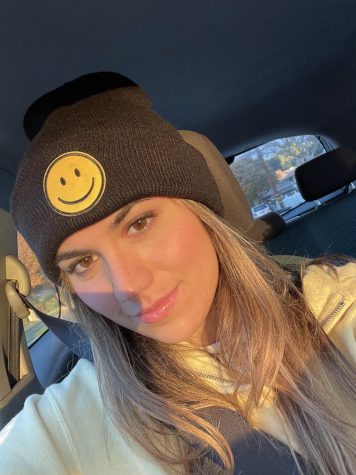SNAPCHAT DYSMORPHIA: The Newest Epidemic
Courtesy of Pixabay
We’ve all been there. It’s a brisk fall night. After finishing up your tedious calculus homework, you go to the bathroom and proceed with your nighttime routine consisting of washing your face, brushing your teeth, and applying one-too-many pointless moisturizers. You open Snapchat and tuck yourself underneath your warm covers. But the cozy blanket doesn’t prevent the sudden chill you feel.
You’ve been “snapped” by a boy you like.
You hesitate to open it because you have just washed your makeup down the drain, but your compulsiveness takes over, and you open it. To the rescue comes a filter that makes you look like you’re at New York Fashion week but in reality, you are in between your Macy’s sheets wearing your Forever 21 pajama set.
In reality, this is a daily occurrence – reconstructing your face to appear hotter.
Ya, that’s Snapchat dysmorphia. With 150 million users, Snapchat is a top hit app. On the one hand, it offers a way to connect with friends, share your experiences, and access to view the world through a tiny screen. But who knew that the facade of innocent dog filters and wildly-specific Bitmojis would cause disruption and mental instability to teens all over the world.
With the blink of an eye, you can adorable grow dog ears, tighten your skin, and change your eye color. Snapchat is one of the only apps that can completely transform your look within seconds.
“I use the animal filters for fun photos and eye color changing ones to see what I would look like with green eyes because green eyes are hereditary in my family,” said senior Taylor Carey.

Mia Maalouf, a senior at Mayfield Senior School, shared that although she doesn’t use Snapchat all that much, she can “recognize unrealistic beauty standards in a society of how women should present themselves.” Maalouf said the desire for specific eye colors resonates with her because “that is something humans cannot control.”
Filters allow users to take the easy way out in enhancing their natural look with artificial beauty. Everyone’s wildest dream by adding a fresh, dewy look to your skin, applying blush, and applying eye makeup can be achieved with Snapchat. Although appealing, these filters come with a false sense of beauty standards.
Believing they are expected and obligated to look certain ways that are unrealistic and difficult to maintain or achieve in real life can be especially hard on teens. This may be a factor in the overwhelming majority of students at Mayfield Senior School surveyed who responded that they felt that social media has affected them negatively overall.
Additionally, about 64 percent of the 91 surveyed feel socially obliged to participate in social media and have accounts.
Mia Maalouf, a senior at Mayfield Senior School, shared that although she doesn’t use Snapchat all that much, she can “recognize unrealistic beauty standards in a society of how women should present themselves.” Maalouf said the desire for specific eye colors resonates with her because “that is something humans cannot control.”
“I have discussed body image concerns and the impact of social media, but I have not had people specifically say to me in sessions that they want to look like a certain “filter” on Snapchat,” Mayfield Senior School psychologist, Erika Mastrobuono said.
“However, it does play a role because the ability to change your features and see yourself through a filter is something that has not always been available to teenagers,” Mastrobuono said social media influence remains something to watch for.



